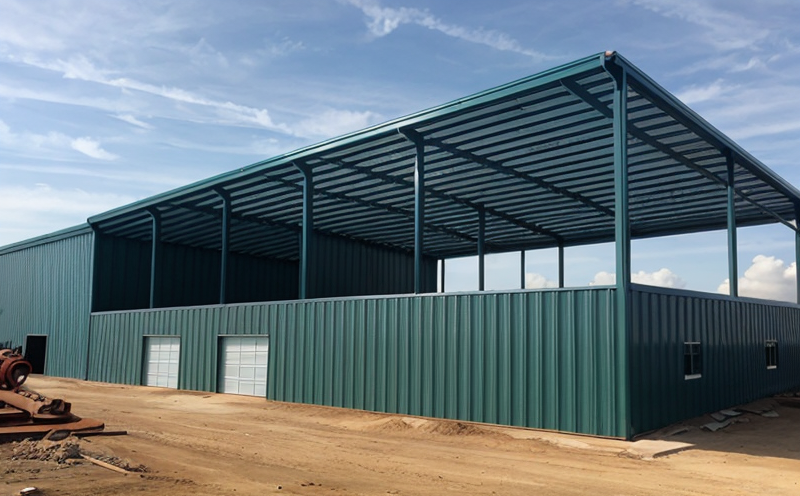ISO 9227 Salt Spray Corrosion Resistance Testing of Smart Devices
The ISO 9227 standard is a widely recognized benchmark for evaluating the resistance to salt spray corrosion, which is crucial in ensuring the durability and reliability of electronic devices operating in harsh environments. This test simulates the corrosive effects that arise from exposure to salt-laden atmospheres such as coastal areas or industrial zones.
Smart home appliances and IoT (Internet of Things) devices are increasingly exposed to these conditions, making ISO 9227 testing essential for manufacturers aiming to meet quality standards and ensure product longevity. The process involves subjecting the device under test to a salt spray environment for an extended period, typically up to 1000 hours, depending on the expected service life of the device.
During this time, the corrosion resistance of the smart device is assessed by monitoring changes in weight and appearance. The apparatus used in ISO 9227 testing includes a salt solution with a specific concentration and pH level, which is atomized to form a fine mist. This mist is directed at the sample placed inside an enclosed chamber.
Manufacturers rely on this test to ensure that their smart devices can withstand environmental conditions without compromising performance or safety. By adhering to ISO 9227 standards, companies can build consumer trust and comply with regulatory requirements across various regions.
| Test Parameters | Description |
|---|---|
| Chamber Temperature | Usually set at 35°C ±2°C to simulate the most aggressive conditions. |
| Relative Humidity | Ensured at 93% RH ±2% to enhance the corrosive environment. |
| Salt Solution Concentration | Typically 5% NaCl (sodium chloride) by weight. |
| Test Duration | Up to 1000 hours, depending on the expected service life of the device. |
The test results are critical for quality managers and compliance officers as they provide valuable insights into potential areas of improvement. R&D engineers can use these findings to refine material selection or design changes that enhance corrosion resistance. For procurement teams, this testing ensures that suppliers meet the necessary standards.
ISO 9227 salt spray testing is a vital step in the development and quality assurance process for smart home appliances and IoT devices. It helps manufacturers identify potential issues early in the product lifecycle, ensuring that their products can withstand harsh environmental conditions without compromising on performance or safety.
Why It Matters
The reliability of electronic devices in demanding environments is paramount for both consumers and manufacturers. Smart home appliances and IoT devices are increasingly used in coastal areas, industrial settings, and other locations where exposure to salt-laden atmospheres is common. Without proper corrosion resistance testing, these devices could fail prematurely or even pose safety risks.
The importance of ISO 9227 testing cannot be overstated. It ensures that products can maintain their integrity and functionality in challenging conditions. This standard helps manufacturers meet regulatory requirements while also building consumer trust by demonstrating a commitment to quality and durability.
For compliance officers, ensuring adherence to ISO 9227 standards is crucial for avoiding potential legal issues and maintaining market access. For R&D engineers, this testing provides valuable data that can inform design decisions and material selection processes. Procurement teams benefit from knowing that suppliers are meeting the necessary quality benchmarks.
In summary, ISO 9227 salt spray corrosion resistance testing plays a crucial role in enhancing the reliability and longevity of smart home appliances and IoT devices. By incorporating this test into their product development process, manufacturers can ensure that their products perform consistently across various environmental conditions, thereby increasing customer satisfaction and market competitiveness.
Eurolab Advantages
At Eurolab, we specialize in providing comprehensive testing solutions for smart home and IoT devices. Our expertise in ISO 9227 salt spray corrosion resistance testing is unparalleled, ensuring that our clients receive accurate, reliable results every time.
- State-of-the-Art Facilities: Equipped with advanced laboratories capable of simulating real-world conditions for precise testing.
- Experienced Technicians: Our team consists of highly skilled and certified professionals who understand the nuances of ISO 9227 testing.
- Comprehensive Reporting: Detailed reports are provided, offering a comprehensive analysis of test results, including any observed corrosion and its extent.
- Regulatory Compliance: We ensure that all tests comply with international standards, including ISO 9227, thereby providing peace of mind for our clients.
By partnering with Eurolab, manufacturers can rest assured that their products are thoroughly tested and prepared to withstand the rigors of real-world conditions. Our commitment to excellence and customer satisfaction sets us apart as a leader in smart home device testing services.
Use Cases and Application Examples
| Use Case | Description |
|---|---|
| Outdoor Smart Thermostats | These devices are often installed in areas with high humidity and exposure to salt spray, making ISO 9227 testing essential. |
| Smart Lighting Systems | Outdoor lighting systems must withstand harsh environmental conditions, including corrosive atmospheres caused by salt-laden winds. |
| Weather Stations | These devices are frequently deployed in coastal areas and industrial zones where exposure to salt spray is common. |
| Smart Home Security Cameras | Cameras installed on the exterior of buildings or in coastal environments need to be robust enough to handle corrosive conditions. |
In addition to these specific use cases, ISO 9227 salt spray testing is beneficial for any smart home or IoT device that will be exposed to harsh environmental conditions. The test results provide valuable insights into the product's durability and reliability, helping manufacturers make informed decisions about design improvements.
For example, a manufacturer of outdoor cameras might use the results from this test to adjust their material selection or improve the sealing mechanisms around lenses and other critical components. This ensures that the camera continues to function optimally even in challenging environments.





